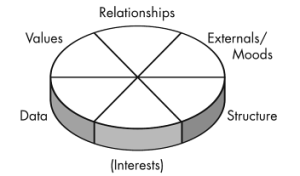Often when I’m mediating a difficult case; the parties, running hot, miles apart and showing no sign of movement, an inner voice whispers softly to me, “it’s just not ripe for settlement.”
It’s an attractive concept because it lets me off the hook. Nothing to be done here until the case ripens. I might as well call it and move on to the next one.
This facile approach to ripeness in mediation can be a Siren song that mediators (including this one) must resist. As usual in mediation the way forward is with questions: Why isn’t this case ripe? What can be done now to ripen this case? If the case can’t be settled today what’s the right next step to move it towards resolution?
Mediators know that parties value mediator perseverance, but HOW do we perservere in these situations? What do we actually do?
I know that for me, finding a quiet spot at the mediation facility where I can be on my own and reflect is often helpful. In those moments I try to organize my thoughts around three questions: (1) What’s really driving this dispute?; (2) what are the barriers preventing settlement?; and (3) what’s the right next step in this mediation?
For me, a useful framework for dealing with the first question has always been The Circle of Conflict
(the link is to Google Books – The Conflict Resolution Toolbox: Models and Maps for Analyzing, Diagnosing and Resolving Conflict by Gary T. Furlong. Gary gives credit to Chris Moore and his seminal book, The Mediation Process for the Circle. I also believe Bill Lincoln should be given some credit for the very early development of these concepts)
I’ve found this a highly effective tool for both analyzing what’s driving a dispute and reminding me of the basic strategy for moving the matter towards resolution.
Turning to the question of Barriers I tend to go back to an excellent 2006 article by Joe and Sue Epstien, The Top Ten Barriers To Dispute Resolution
The top 10 barriers to dispute resolution identified by the authors are the following:
- Inadequate Planning and Preparation;
- False First Impressions and Perceptions;
- Grief;
- Systemic Distrust;
- Failure to Communicate and Listen;
- Insufficient Focus on Underlying Interests;
- Partisan Perception, Judgmental Overconfidence, and Wrong Baselines;
- Reactive Devaluation;
- Misunderstanding the Loss/Risk Analysis;
- Failure to give Opponents Face, Respect, and Dignity.
As to next steps, engaging the parties in this analysis can be helpful. Asking a party and their lawyer, in caucus, for their views on what’s really driving the dispute (using the Circle of Conflict) and which of the barriers listed above are present can help shake up the mediation and move things forward.
It may be that a thorough canvassing of “drivers” and “barriers” will lead to the conclusion that matters beyond the mediator’s control are standing in the way of settlement. Still, a mediator can provide value by highlighting what those matters are and suggesting steps to be taken to clear the way for resolution. I think the key is framing the questions around, “how do we move this matter forward to settlement?”.
These are some of the approaches I’ve found helpful to accelerate the ripening of disputes in the mediation hot house.
P.S. (August 9, 2012) A recent post by Richard Shore on the Forbes Leadership Forum makes some helpful suggestions on this topic.
________________________
To make sure you do not miss out on regular updates from the Kluwer Mediation Blog, please subscribe here.




A nice piece, Rick. Thanks for highlighting the top 10 barriers. I was involved in a medation this week in which nearly all of them were at work. I wonder if they are connected, like Morton Deutsch’s characteristics of competitive processes, so that if you get one you tend to get them all. For example, once the parties view each other through the prism of ‘systemic distrust’, there’s a strong chance that they will fail to give each other face or respect, and reactively devalue proposals.
This is a really useful blog. You are right to discourage the ‘it’s not ripe’ excuse. The 10 barriers are really helpful.
I’d like to add another barrier. I see mediation as having 2 parts – who did what to whom? and what’s it going to take to fix it? My experience is that we often see the first part as inefficient; unduly emotional; circuituous etc and we try to move things along (or the advocates push to do so). Investing in the first part is often the key to ripeness. Left to find its own pace, coming to terms with what has happened can suddenly (and with no apparent explanation) move parties to the point where they are ready to explore options and the dispute is ripe for resolution.
As a beginner concerning mediation techniques your tips help greatly, and for this I say thank you.
If I may I will leave you with this thought.
There is a big difference between
hearing and listening.